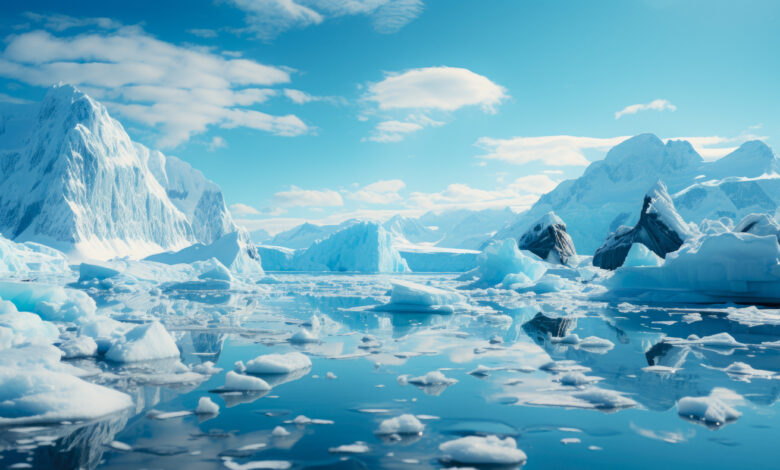Unprecedented Heatwave Strikes Antarctica: A Grim Sign of Climate Change’s Impact on the Coldest Region

Antarctica, the world’s coldest and most pristine region, experienced an unprecedented heatwave in March 2022, shattering records and highlighting the far-reaching impacts of climate change. A recent study, titled “The Largest Ever Recorded Heatwave – Characteristics and Attribution of the Antarctic Heatwave of March 2022,” detailed this alarming event, which saw temperatures in Eastern Antarctica soar to astonishing heights, marking a stark departure from its frigid norms.
During this historic heatwave, temperatures in Eastern Antarctica surged approximately 39 degrees Celsius (102.2 degrees Fahrenheit) above the monthly average. On March 18, the pinnacle of this extraordinary event, the temperature rose to -10°C (-14°F). This sharp rise was in stark contrast to the usual -54°C (-65.2°F) average for March in this region.
What made this event even more remarkable was that temperatures remained above the previous record low of -31°C (-23.8°F) for March over three consecutive days, even during the nighttime.
Researchers investigating the heatwave found that it was a consequence of unusual air circulation patterns near Australia. In a mere four days, a warm mass of air from Southern Australia had infiltrated East Antarctica, a phenomenon of remarkable speed. Edward Blanchard-Wrigglesworth, the author of the study, noted that this rapid incursion was likely the fastest on record.
This heatwave occurred shortly after February 2022 witnessed record sea ice minima. However, the study revealed that sea surface temperature anomalies in the Southern Ocean had only a minimal effect on the heatwave’s magnitude. The primary driver, researchers argued, was climate change. They estimated that climate change amplified the heatwave by making it approximately two degrees Celsius (3.6°F) warmer. Furthermore, projections suggest that heatwaves in the latter part of the 21st century could be an additional five to six degrees Celsius (9-10.8°F) warmer, underscoring the dire consequences of ongoing climate change.
In February 2023, the sea ice minima reached a new record low due to the continuing rise in global temperatures, plunging sea ice levels 20 percent below the average of the last four decades. These trends forebode a grim future for Antarctica.
Edward Blanchard-Wrigglesworth emphasized the potential repercussions of increased frequency of such heatwaves over the next half-century or even century. It could trigger unforeseen effects that were previously not on scientists’ radar.
This worrying situation in Antarctica has already begun to affect its unique ecosystems. Recent research reported a distressing decline in emperor penguin populations in the West Antarctic breeding grounds towards the end of 2022. The erosion of sea ice due to rising temperatures has left these remarkable birds vulnerable. Their tiny feet are ill-suited for traversing the open water, leading to many drowning or freezing to death.
The Antarctic heatwave serves as a stark reminder that climate change knows no boundaries. Even the world’s coldest and most remote regions are not immune to its impacts. Urgent global action is needed to mitigate the devastating consequences of climate change and protect our planet for future generations.





